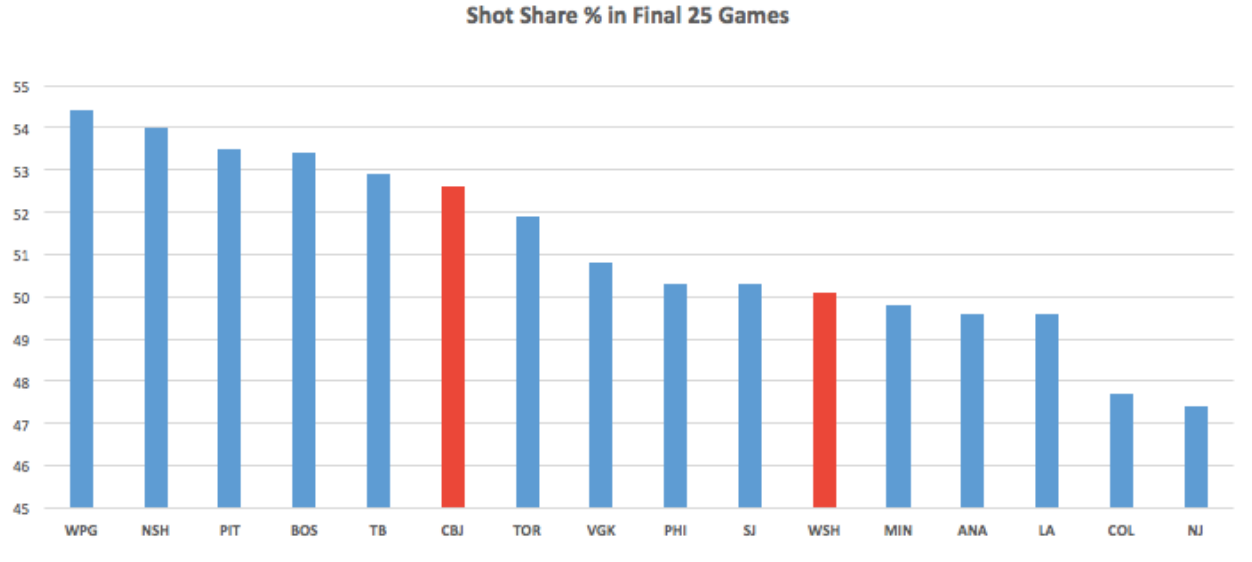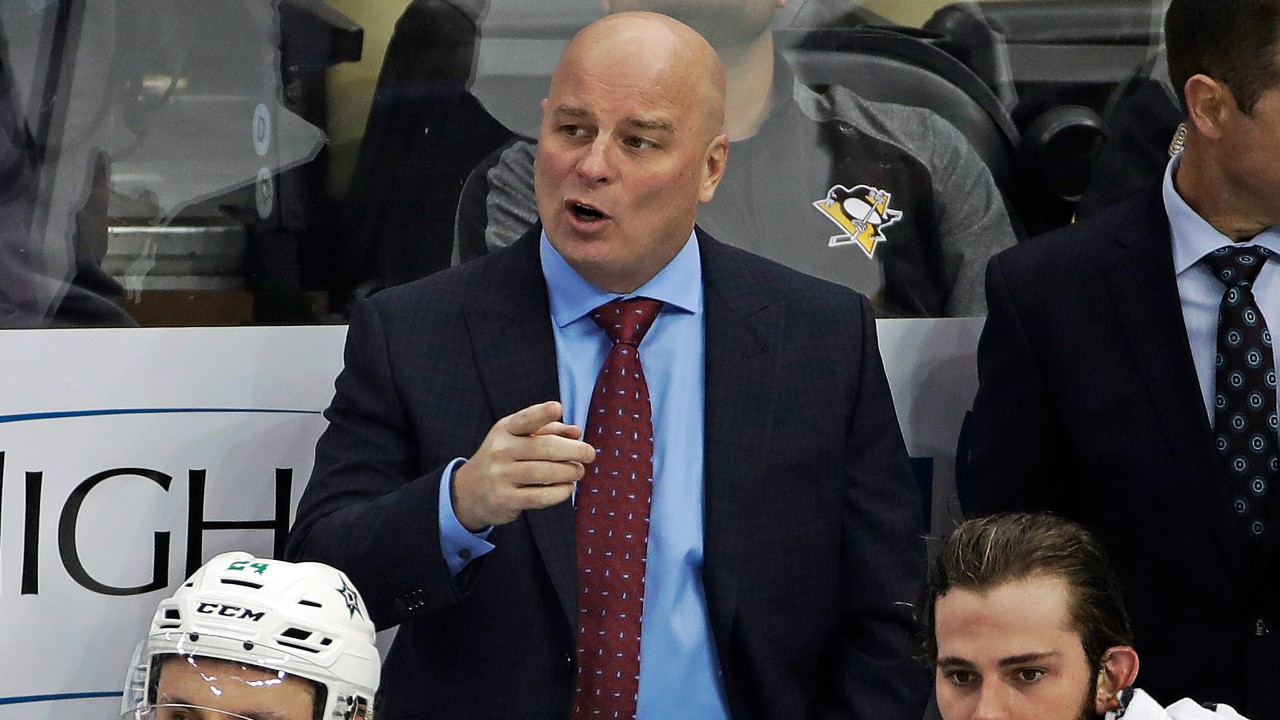After finally reaching the finish line of yet another long and winding marathon of a regular season, we’re about to be rewarded for our patience and sticktoitiveness with what’s shaping up to be a sublime post-season of hockey.
Here’s the deal: if you’re looking for guidance in filling out your playoff bracket so that you can win your office pool, or look smart amongst your family and friends, my colleagues and I have gone ahead and filled out our own respective brackets as a group here.
Just be forewarned: As much time and effort as we’ve put into agonizing over our selections, combing through the data and analyzing the matchups from seemingly every possible angle, the thing about the Stanley Cup Playoffs is that there’s a ton of randomness baked in.
Whether it’s an ill-timed injury, a couple of bounces here and there, or a goalie who unexpectedly morphs into a brick wall, you can approach prognosticating them with the most logical and well thought-out strategy and still wind up being horribly wrong.
Look no further than last season. Everyone (myself included) was picking the Boston Bruins to make quick work of the Ottawa Senators in the opening round, and based on all information we had available at the time, it was the right call. Not only did that not happen, but the Senators actually wound up making it to within just one goal of a Stanley Cup final appearance, but fell to the eventual Stanley Cup champions.
That sort of unpredictability can be frustrating, but it’s also what makes the NHL post-season so fun. The fact anything can happen is what keeps all of us glued to our screens and sitting on the edge of our seats during a fourth overtime period in the middle of the night, even though we’re tired and have to go to work the next morning.
That’s especially true in the opening round. While there technically isn’t as much at stake as in the later rounds, there’s so much going on every night. With multiple games to tune into on a nightly basis, that first week or two of the playoffs best encapsulates the wild rollercoaster nature of the ride.
In the lead up to it, let’s survey the landscape and explore a couple of notable trends and matchups worth considering:
1. The league shifted to this current playoff format because it wanted to place an added emphasis on rivalries, which are theoretically bolstered over time by repeated post-season meetings. In that regard, it got what it wanted – there’s a number of tasty matchups in the opening round, both in terms of geographical proximity and storylines.
The issue that we keep circling back to however is whether that ultimately warrants diminishing the importance of regular season success, and punishing certain teams for just happening to be caught in tough divisions.
Because of the way things are currently lined up, there’s a pretty blatant imbalance in terms of who gets to play who, opening the door for questions about if the structure is fair (i.e. rewarding teams that did well with easier matchups), and optimal (allowing for the best teams to advance as far possible and setting up dream matchups with more on the line).
While it’s not quite as egregious as the Blue Jackets finishing fourth last season and drawing an opening round matchup on the road against the second-seeded Penguins, both the Bruins and Leafs appear to have a very valid beef this go around.
1 (Predators) vs. 17 (Avalanche)
2 (Jets) vs. 8 (Wild)
3 (Lightning) vs. 15 (Devils)
4 (Bruins) vs. 7 (Leafs)
5 (Golden Knights) vs. 12 (Kings)
6 (Capitals) vs. 14 (Blue Jackets)
9 (Ducks) vs. 11 (Sharks)
10 (Penguins) vs. 13 (Flyers)
The path for either team to make their way through the East is brutal. The Leafs, for example, are facing the very real possibility of having to oust the fourth- and third-ranked teams in the league just to get to the conference final, where they could then face the two-time defending champion Penguins (who got to face the 13th- and 14th-ranked teams themselves because of where they fit in the bracket).
That said, for viewing purposes the Boston-Toronto matchup looks to be one hell of a heavyweight battle. It seems reasonable to assume we’ll see a ton of Bergeron vs. Matthews in this one, which means the outcome of the series could be determined by which team is able to squeeze more complementary scoring out of its secondary lines.
It’s scary betting against the Leafs because of how much high-end talent they have and how quickly they could turn everything on its head, but the Bruins’ dominance (particularly at five-on-five) has been too great to overlook. Since starting the year 6-7-3 with a minus-9 goal differential, in their last 65 games they’re 44-13-8 with a plus-65 goal differential. In that time, at five-on-five they’ve controlled a league-best 54.2 per cent of shot attempts, 54.4 per cent of shots on goal, and 56.7 per cent of goals scored.
2. One of the most compelling teams heading into this post-season are the Columbus Blue Jackets. They’re on a 13-2-2 tear, during which they outscored their opponents by a whopping 70-46 margin (that plus-24 represents a league-high goal differential during that stretch of time).
While those wins were pivotal for getting them in, the promising signs regarding their chances extend even further beyond that and before the process started translating into results. One thing we do know about an otherwise unpredictable post-season is that performance over the 25 most recent games leading up to it is usually a good indicator for future success.

That right there is a good example of why the Blue Jackets are widely considered to be a trendy sleeper pick to upset the Capitals in Round 1, and why looking at recent trends can be a handy tool for us.
While it may have taken them longer than they ideally would’ve liked to figure out where all of the pieces fit best, all that matters now for Columbus is that they wound up getting here following some savvy trade deadline tinkering.
There’s a lot to like about the weapons the Blue Jackets have at their disposal now. Sergei Bobrovsky gets a bad rap for his lack of post-season success, but the reality is that it’s impossible to properly evaluate him in a grand total of 18 playoff appearances to-date. Otherwise he’s a tremendous puck stopper, who once again put together a strong campaign in which he led the league in goals saved above average.
On the blue line, all of the praise thrown the way of Seth Jones and Zach Werenski as one of the best defence pairings in the league are warranted. The addition of Ian Cole has worked out swimmingly and allows everything else to fall into place with himself and David Savard gelling as a second pair (and just as importantly bumping Jack Johnson out of the lineup).
Up front, Columbus is a nightmare to match up against. With the return of Nick Foligno, they can now throw three legitimate scoring lines at you. The addition of Thomas Vanek is a big reason that’s possible, as he’s proven to be one of the most effective acquisitions from the deadline. Paired up with Alex Wennberg and Boone Jenner, the three have played 150 minutes together at five-on-five, during which they’ve outscored the opposition 16-4 and controlled 54.7 per cent of the shot attempts.
What separates this particular Blue Jackets squad from those that failed to get over the first round hurdle is that they finally have a bonafide superstar in Artemi Panarin to put the team on his back and do the heavy lifting offensively. Not only did Panarin dazzle people all year with his spectacular creativity and patience with the puck, but he most importantly put an end to any idea that he was just a product of who he was playing with in Chicago.
| Player | Goals Created | Team Goals | % Offensive Contribution |
|---|---|---|---|
| Connor McDavid | 79 | 229 | 34.5 |
| Nathan MacKinnon | 77 | 255 | 30.2 |
| Tyler Seguin | 66 | 231 | 28.6 |
| Taylor Hall | 68 | 243 | 28.0 |
| Anze Kopitar | 66 | 237 | 27.9 |
| Phil Kessel | 75 | 270 | 27.8 |
| Evgeni Malkin | 75 | 270 | 27.0 |
| Alex Ovechkin | 69 | 256 | 27.0 |
| Claude Giroux | 66 | 249 | 26.5 |
| Johnny Gaudreau | 57 | 216 | 26.4 |
| Artemi Panarin | 62 | 236 | 26.3 |
| Blake Wheeler | 71 | 273 | 26.0 |
| Patrick Kane | 58 | 228 | 25.4 |
In finishing with 82 points in 81 games, Panarin became the first Blue Jacket to ever top the 80-point mark (besting Rick Nash’s 79 back in 2008-09). If Columbus really is going to take that next step as a franchise and finally win a playoff series for the first time in their existence, the fact they finally have a player of this caliber will surely be a big reason why.
3. One of my favourite things about the post-season is that each series has a unique feel based on the way the two teams involved match up against each other from an Xs and Os standpoint.
There’s something so intriguing about the idea that a playoff series turns into a game of cat and mouse, and how it’ll come down to which team is best able to strategically hide their warts and simultaneously capitalize on their opposition’s own weaknesses.
That’s a large part of what swings the needle decidedly in the favour of the Penguins in their opening round series against the Flyers. While Pittsburgh is more susceptible to being beaten than they’ve been in the past, and the top of Philadelphia’s lineup is lethal enough to give anyone nightmares, how the two teams match up in the special teams department is something that can’t be overlooked when projecting this series.

With an immaculately constructed five-man unit featuring Phil Kessel, Sidney Crosby, Evgeni Malkin, Kris Letang, and Patric Hornqvist, it’s not exactly a surprise the Penguins’ power play has been a dominant force this season. They not only led the league in efficiency, but became one of just 13 teams to generate north of nine goals per hour spent with the man advantage since 2007, lagging only behind the 2012-13 Capitals, 2008-09 Capitals, 2008-09 Red Wings, and 2009-10 Capitals.
While there isn’t a team out there that wouldn’t have all sorts of challenges dealing with that type of firepower, this particular Flyers team seems especially ill-equipped to slow it down in any fashion. Historically a franchise that has been porous on the penalty kill, their struggles in that department have reached all new heights this season — they’re inversely giving up north of nine goals against per hour when down a player, becoming just one of 15 teams to do so since 2007. That rate of 9.12 goals against was good for 29th this season, and the 13th-worst figure in the past decade.
If the Flyers have any hope of pulling off an upset and advancing to Round 2, they’ll either need to be disciplined and stay out of the penalty box, or find a way to reverse this trend. Based on what we’ve seen from the two respective special teams units this season, I wouldn’t bet on the latter.
[relatedlinks]







